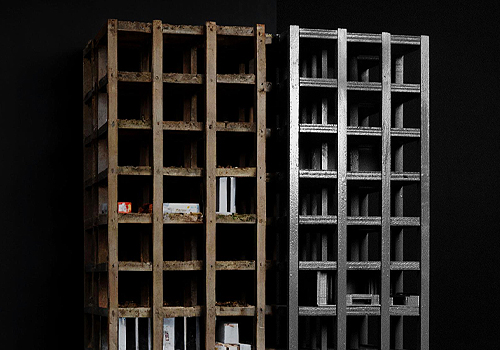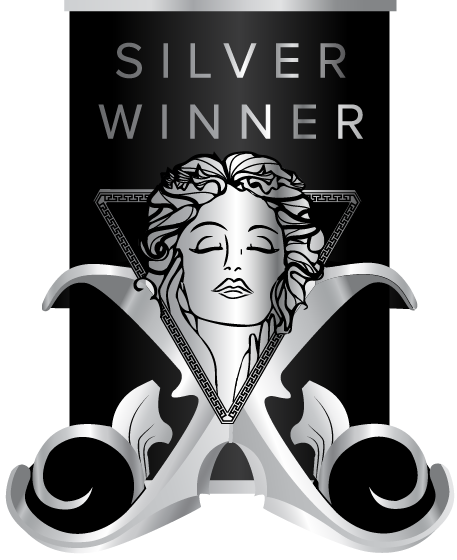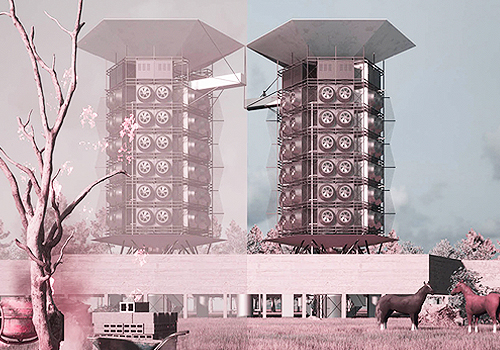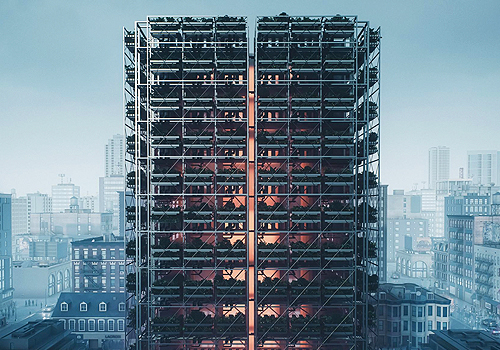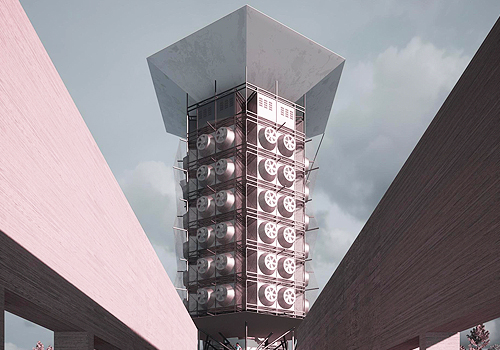Interview
Haochen He
1 Congratulations on winning the MUSE Design Awards! Can you introduce yourself and share about what inspired you to pursue design as a career?
I am Haochen He, an architectural designer currently working at a large international design firm specializing in sports and venue projects. I received my Bachelor of Architecture from Cornell University. Beyond my professional role, my practice spans four interrelated fields: architecture, fine art, photography, and writing. My architectural and artistic works have received international recognition through awards such as the MUSE Design Awards, Loop Design Awards, and Archasm Competition. My artwork has been exhibited in Europe, including LoosenArt in Italy. At the same time, my photographic projects have been featured internationally, and my writings have been published in magazines in China, Korea, and the United States. I continue to advance these four areas in parallel, allowing each to inform and enrich the others. What inspired me to pursue design as a career is the way it merges curiosity with creation. From an early stage, I was fascinated by how built environments shape the way people move, gather, and imagine their place in the world. Design offered me a way to explore these questions while connecting multiple disciplines—space, art, image, and text—into a single practice. To me, design is a platform where ideas can be tested and transformed into experiences that connect people and challenge assumptions.
2 What does being recognized in the MUSE Design Awards mean to you?
Being recognized in the architectural category of the MUSE Design Awards is a meaningful affirmation of my work. It reinforces my commitment to architecture as both a professional practice and a space for experimentation and reflection. This recognition shows that the ideas I pursue in design can resonate more broadly, motivating me to continue creating projects that merge function with imagination while drawing on art and photography to enrich my architectural approach.
3 How has this achievement impacted your career, team, or agency, and what opportunities has it brought so far?
This achievement has been especially meaningful for me as an individual designer. It has given me the confidence to keep pursuing experimental architectural ideas and to share my voice more openly within the wider design community. The award has already created opportunities to connect with other professionals and platforms that value innovation in architecture. Most importantly, it encourages me to continue developing personal projects alongside my professional work, with the assurance that these explorations can be recognized on an international stage.
4 What role does experimentation play in your creative process? Can you share an example?
Experimentation is central to my creative process because it allows me to test boundaries and discover new ways of understanding architecture. It is a laboratory where ideas can be translated into form, image, or narrative without the constraints of function or convention. In one recent project, for instance, I reimagined the stair not as a functional link but as a fragmented artifact shaped by digital glitches. By building a hand-crafted model and extending it through digital manipulation, I was able to question how architecture might reflect the misalignments between the body and coded environments. Projects like this remind me that experimentation is not only about invention but also about creating dialogue and opening space for alternative perspectives.
5 What's the most unusual source of inspiration you've ever drawn from for a project?
One of the most unusual sources of inspiration I have drawn from is watching how people use public spaces in unexpected ways. Everyday gestures—like how a crowd navigates a plaza or how children transform leftover structures into places for play—often reveal a hidden layer of design that no drawing can predict. Observing these small but surprising actions has inspired me to see architecture not only as a system of order but also as a field that adapts to human improvisation. For me, the unusual often arises from life itself, where unplanned behavior sparks design ideas.
6 What’s one thing you wish more people understood about the design process?
One thing I wish more people understood about the design process is that it is not a straight line from concept to completion. It is a dialogue involving research, experimentation, and revision, often moving back and forth between success and failure. Design is not only about producing a finished object but also about questioning assumptions and testing possibilities along the way. This uncertainty is not a weakness but the very space where creativity emerges. The process is as important as the outcome, and it is through iterations and experiments that a project gains its depth and meaning.
7 How do you navigate the balance between meeting client expectations and staying true to your ideas?
Balancing client expectations with my own ideas begins with listening. I see the client’s vision as the foundation, but I also believe my role as a designer is to introduce perspectives they may not have considered. I aim to create a dialogue where practical needs are met while leaving room for experimentation and imagination. When these aspects align, the project moves beyond fulfilling requirements and instead opens new possibilities. For me, balance comes through collaboration—where respect for the client’s goals and dedication to my design philosophy coexist and enrich one another.
8 What were the challenges you faced while working on your award-winning design, and how did you overcome them?
One of the main challenges I faced in this project was working at a massive scale while still maintaining a meaningful design at the human level. Stadium and venue architecture involves complex systems, technical requirements, and coordination across many disciplines, and it can be easy for the individual experience to get lost. I overcame this by continually returning to the question of how people would feel as they moved through the spaces. Through testing different strategies and experimenting with forms and materials, I was able to bridge the scale of infrastructure with moments that foster intimacy and connection. This approach allowed the project to remain both highly functional and emotionally resonant.
9 How do you recharge your creativity when you hit a creative block?
When I face a creative block, I often step away from the immediate problem and immerse myself in a different medium. Photography and drawing allow me to shift perspective and notice patterns or details I might otherwise overlook in architectural work. Sometimes I recharge by walking through the city or traveling, observing how people interact with spaces in unplanned ways. These pauses give me distance and help me return to design with a refreshed mind. For me, creativity is renewed not by forcing solutions but by opening myself to new ways of seeing and experiencing.
10 What personal values or experiences do you infuse into your designs?
I infuse my designs with values of curiosity, openness, and human connection. My background in architecture, art, photography, and writing has shaped my belief that design is more than problem-solving—it is a way of seeing and creating. I draw from personal experiences of observing how people adapt spaces in unexpected ways, and I value experimentation as a means of uncovering hidden possibilities. Each project becomes not only a response to functional needs but also an opportunity to create meaning, invite dialogue, and reflect the diverse ways people live and imagine their environments.
11 What is an advice that you would you give to aspiring designers aiming for success?
My advice to aspiring designers is to remain open to experimentation and embrace uncertainty. Success rarely comes from following a single path; it emerges from allowing curiosity to guide you across different disciplines and experiences. Learn to listen, observe, and question assumptions, because design is as much about asking the right questions as it is about creating solutions. Most importantly, keep your practice authentic to your own voice while staying responsive to the world around you.
12 If you could collaborate with any designer, past or present, who would it be and why?
If I could collaborate with any designer, I would choose Junya Ishigami. His work demonstrates how architecture can be both delicate and radical, dissolving boundaries between the built environment and the natural world. What inspires me most is his ability to transform abstract ideas into spaces that feel at once experimental and deeply human. Collaborating with him would be an opportunity to explore how architecture might become lighter, more open, and more attuned to imagination, while still provoking questions about how we live and interact with space.
13 What's one question you wish people would ask you about your work, and what's your answer?
One question I wish people would ask me is how I connect architecture with my other creative practices. My answer is that I never see them as separate fields. Architecture allows me to study systems and space, while art, photography, and writing let me reflect on identity, perception, and narrative. When these practices come together, they reveal nuances that no single discipline could capture on its own. That overlap is where I find the deepest meaning in my work.
